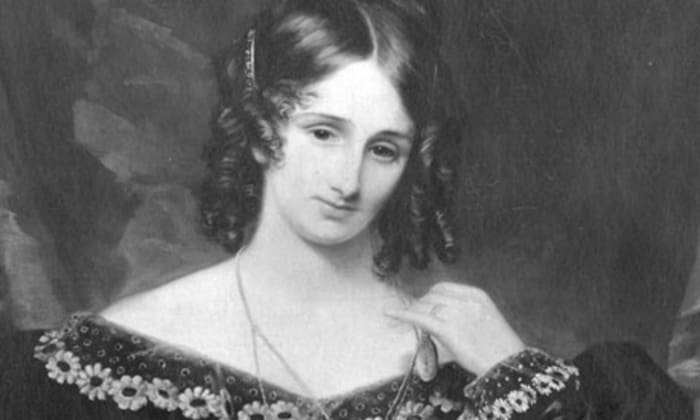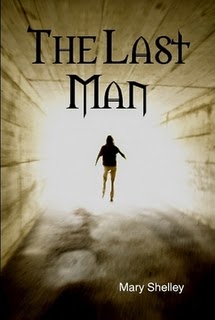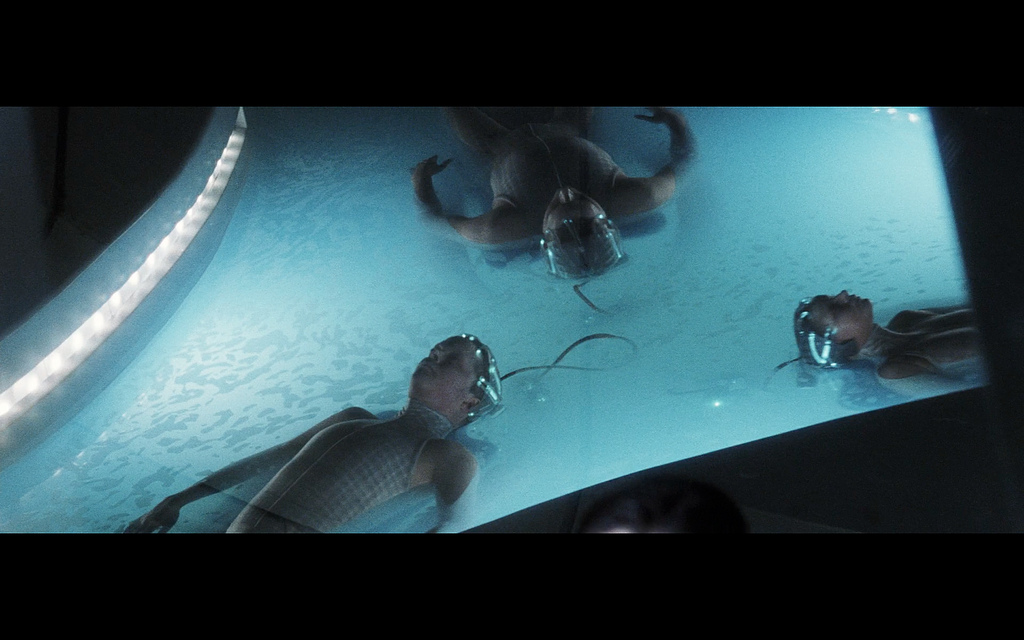It looks like you're using an Ad Blocker.
Please white-list or disable AboveTopSecret.com in your ad-blocking tool.
Thank you.
Some features of ATS will be disabled while you continue to use an ad-blocker.
9
share:
I was reading all about the Cumaean Sybil and came upon a novel by Mary Shelley I have never heard of called "The Last Man".
Mary Shelley is the classical British Author who was married to Percy Shelley, the Romantic Poet. Obviously, Mary is the creator of "Frankenstein".
For anyone who is not familiar with the Sybils these were ancient Prophetesses who frequented many cultures early on in their civilized development. The Cumaean Sybil is perhaps the best known;
en.wikipedia.org...
I have known about the Sybils for a long time. I once had a dream about a Sybil in a cave who was reading Haruspex in a trance to me. Haruspex is a kind of prophesying by reading entrails. The dream I had, I remember, being very dark; in the cave with this strange old lady, made the hairs on my dreaming neck stand up and I have never forgotten this dream experience. I did not even know anything about Haruspex until years later when I discovered it by chance. It was only years later I understood what I dreamed of all those years ago. That has happened a number of times.
en.wikipedia.org...
Mary Shelley incorporated the Sybil phenomenon into her novel "The Last Man".
en.wikipedia.org...
*The discovery of the prophesises is of course fiction used by the author.
There is a good essay analysis of the novel here:
www.rc.umd.edu...
For me this is a great find: I love reading the Dystopian Novels. Mary was a particularly gifted writer. I see the "skull beneath the skin" of her writing. "Frankenstein" is metaphorically prophetic.
Though her "The Last Man" was hated by the critics and almost forgotten until the 1960s is a phenomenon in itself. Mary always said it was her personal favourite of all her novels. In the novel she provides first personal biographical data on Shelley, Byron and herself, apparently. These will be the best accounts of their characters we are likely to get anywhere and come from the skilled hand of a great Literary Adept.
In subject matter it is a prophesy of doom for humanity and is set in the last years of the 21st century. A plague sweeps through humans and decimates them until there is only one person left.
I have not read it yet, but am glad to know of this novel. I shall of course be reading it soon. Mary is my favourite of all Women Authors, no contest at all. I would be willing to wage a bet that there is matter here that is deeply applicable to us now. She deliberately used the Sybil to declare the nature of her novel as for a future time and, unbeknownst to her, set the novel in a time where it is actually a very realistic possibility due to our overcrowding and the unexploded warhead of poverty even sweeping the West now. Overcrowding, free movement and intense poverty mixed with dwindling resources and possible huge climate upheaval are a great recipe for a future human cataclysm. We are now losing our beloved Anti-biotics, the miracle that only lasted a while because we ABUSED them so out of commercial greed and convenience. It did not have to be that way, but it is going to cost us dearly my logic informs me unless Science can answer this latest self imposed biological threat.
If I was to take any future literary foresight seriously it would be Mary and if I could call any writer in the modern age a Sybil it would indeed be Mary. As I quoted earlier in the thread Mary did actually visit the cave, too. She did her field work.
Personally, I view her as the most intellectual and sensitive of her literary crew. Shelley, with such a woman by his side would indeed have achieved great things, but his short life never allowed that. He was only twenty nine when he died . Mary was the longest surviving of all of her gallant crew and lived until an old age. She must have been very alienated with all her memories and losing her genius companions that her generation could in no way replace for her. Even of all her children only one survived; Percy Florence. She is known to have been very depressed in her later life.


The legend of the Cumean Sybil is that she lived so long that she shrank and was eventually kept in a jar. TS Eliot, in his poem "The Wasteland", alludes to this legend;
Remember the movie "Minority Report"? Well that takes some of its ideas from the Sybil in the Jar Legend.

Mary Shelley is the classical British Author who was married to Percy Shelley, the Romantic Poet. Obviously, Mary is the creator of "Frankenstein".
For anyone who is not familiar with the Sybils these were ancient Prophetesses who frequented many cultures early on in their civilized development. The Cumaean Sybil is perhaps the best known;
en.wikipedia.org...
The Cumaean Sibyl was the priestess presiding over the Apollonian oracle at Cumae, a Greek colony located near Naples, Italy. The word sibyl comes (via Latin) from the ancient Greek word sibylla, meaning prophetess. There were many sibyls in different locations throughout the ancient world. Because of the importance of the Cumaean Sibyl in the legends of early Rome as codified in Virgil's Aeneid VI, and because of her proximity to Rome, the Cumaean Sibyl became the most famous among the Romans. The Erythraean Sibyl from modern-day Turkey was famed among Greeks, as was the oldest Hellenic oracle, the Sibyl of Dodona, possibly dating to the second millennium BC according to Herodotus, favored in the east.
I have known about the Sybils for a long time. I once had a dream about a Sybil in a cave who was reading Haruspex in a trance to me. Haruspex is a kind of prophesying by reading entrails. The dream I had, I remember, being very dark; in the cave with this strange old lady, made the hairs on my dreaming neck stand up and I have never forgotten this dream experience. I did not even know anything about Haruspex until years later when I discovered it by chance. It was only years later I understood what I dreamed of all those years ago. That has happened a number of times.
en.wikipedia.org...
Mary Shelley incorporated the Sybil phenomenon into her novel "The Last Man".
en.wikipedia.org...
The Last Man is a post-apocalyptic science fiction novel by Mary Shelley, which was first published in 1826. The book tells of a future world that has been ravaged by a plague. The novel was harshly reviewed at the time, and was virtually unknown until a scholarly revival beginning in the 1960s. It is notable in part for its semi-biographical portraits of Romantic figures in Shelley's circle, particularly Shelley's late husband Percy Bysshe Shelley and Lord Byron.
Mary Shelley states in the introduction that in 1818 she discovered, in the Sibyl's cave near Naples, a collection of prophetic writings painted on leaves by the Cumaean Sibyl. She has edited these writings into the current narrative, the first-person narrative of a man living at the end of the 21st century.
*The discovery of the prophesises is of course fiction used by the author.
There is a good essay analysis of the novel here:
www.rc.umd.edu...
For me this is a great find: I love reading the Dystopian Novels. Mary was a particularly gifted writer. I see the "skull beneath the skin" of her writing. "Frankenstein" is metaphorically prophetic.
Though her "The Last Man" was hated by the critics and almost forgotten until the 1960s is a phenomenon in itself. Mary always said it was her personal favourite of all her novels. In the novel she provides first personal biographical data on Shelley, Byron and herself, apparently. These will be the best accounts of their characters we are likely to get anywhere and come from the skilled hand of a great Literary Adept.
In subject matter it is a prophesy of doom for humanity and is set in the last years of the 21st century. A plague sweeps through humans and decimates them until there is only one person left.
I have not read it yet, but am glad to know of this novel. I shall of course be reading it soon. Mary is my favourite of all Women Authors, no contest at all. I would be willing to wage a bet that there is matter here that is deeply applicable to us now. She deliberately used the Sybil to declare the nature of her novel as for a future time and, unbeknownst to her, set the novel in a time where it is actually a very realistic possibility due to our overcrowding and the unexploded warhead of poverty even sweeping the West now. Overcrowding, free movement and intense poverty mixed with dwindling resources and possible huge climate upheaval are a great recipe for a future human cataclysm. We are now losing our beloved Anti-biotics, the miracle that only lasted a while because we ABUSED them so out of commercial greed and convenience. It did not have to be that way, but it is going to cost us dearly my logic informs me unless Science can answer this latest self imposed biological threat.
If I was to take any future literary foresight seriously it would be Mary and if I could call any writer in the modern age a Sybil it would indeed be Mary. As I quoted earlier in the thread Mary did actually visit the cave, too. She did her field work.
Personally, I view her as the most intellectual and sensitive of her literary crew. Shelley, with such a woman by his side would indeed have achieved great things, but his short life never allowed that. He was only twenty nine when he died . Mary was the longest surviving of all of her gallant crew and lived until an old age. She must have been very alienated with all her memories and losing her genius companions that her generation could in no way replace for her. Even of all her children only one survived; Percy Florence. She is known to have been very depressed in her later life.


The legend of the Cumean Sybil is that she lived so long that she shrank and was eventually kept in a jar. TS Eliot, in his poem "The Wasteland", alludes to this legend;
The epigraph to T. S. Eliot's poem The Waste Land (1922) is a quote from the Satyricon of Petronius (48.8) wherein Trimalchio states, "Nam Sibyllam quidem Cumis ego ipse oculis meis vidi in ampulla pendere, et cum illi pueri dicerent: Σίβυλλα τί θέλεις; respondebat illa: ἀποθανεῖν θέλω." ("For I indeed once saw with my own eyes the Sibyl at Cumae hanging in her jar, and when the boys asked her, 'Sibyl, what do you want?' she answered 'I want to die'.")[5]
Remember the movie "Minority Report"? Well that takes some of its ideas from the Sybil in the Jar Legend.

edit on 4-12-2017 by Revolution9 because: (no reason given)
a reply to: Revolution9
Great story. Shelley is an amazing author.
I always found this story extremely interesting:
Staying alive: the women who are immune to Aids
With 7.2 billion people there always seems to be a small pocket of people who are immuned.
Great story. Shelley is an amazing author.
I always found this story extremely interesting:
Staying alive: the women who are immune to Aids
With 7.2 billion people there always seems to be a small pocket of people who are immuned.
originally posted by: dfnj2015
a reply to: Revolution9
Great story. Shelley is an amazing author.
I always found this story extremely interesting:
Staying alive: the women who are immune to Aids
With 7.2 billion people there always seems to be a small pocket of people who are immune.
Thanks for the heads up. Thank you for your contribution. Sorry I was short with you earlier. It's just silly politics. Literature makes gentle folk out of us all when we chat about it.
a reply to: BlueJacket
Me too. I hope we may get to compare notes after reading. I will do a thread revisit somewhere down the line perhaps.
Me too. I hope we may get to compare notes after reading. I will do a thread revisit somewhere down the line perhaps.
new topics
-
Musk calls on King Charles III to dissolve Parliament over Oldham sex grooming gangs
Mainstream News: 17 minutes ago -
Grenfell Tower Fire revisited
Mainstream News: 1 hours ago -
The Why Files Lacerta Reveals the Truth of our Creation
Aliens and UFOs: 1 hours ago -
Watts home paranormal activity
Paranormal Studies: 9 hours ago -
So, what is really going on in South Korea ?
World War Three: 10 hours ago -
Congress Says the FBI is Covering Up Vital Info on the Jan 5th 2021 D.C. Pipe Bombs at RNC-DNC.
Political Conspiracies: 10 hours ago
top topics
-
Congress Says the FBI is Covering Up Vital Info on the Jan 5th 2021 D.C. Pipe Bombs at RNC-DNC.
Political Conspiracies: 10 hours ago, 12 flags -
Biden Has New Bizarre Injuries to His Face
Politicians & People: 16 hours ago, 12 flags -
The trial on kids was stopped
Medical Issues & Conspiracies: 13 hours ago, 9 flags -
So, what is really going on in South Korea ?
World War Three: 10 hours ago, 6 flags -
Elon Musk Calls for Tommy Robinson to be Freed - and Takes a Dig at Starmer
Politicians & People: 17 hours ago, 6 flags -
Orbs Appear And Form Triangle On Live Cam.
Aliens and UFOs: 15 hours ago, 6 flags -
Something is not adding up in regards to the H-1B commotion
General Conspiracies: 17 hours ago, 5 flags -
Watts home paranormal activity
Paranormal Studies: 9 hours ago, 3 flags -
Musk calls on King Charles III to dissolve Parliament over Oldham sex grooming gangs
Mainstream News: 17 minutes ago, 3 flags -
The Why Files Lacerta Reveals the Truth of our Creation
Aliens and UFOs: 1 hours ago, 2 flags
active topics
-
Petition Calling for General Election at 564,016 and rising Fast
Political Issues • 191 • : SprocketUK -
Musk calls on King Charles III to dissolve Parliament over Oldham sex grooming gangs
Mainstream News • 0 • : angelchemuel -
The trial on kids was stopped
Medical Issues & Conspiracies • 12 • : McGinty -
Grenfell Tower Fire revisited
Mainstream News • 0 • : angelchemuel -
Elon Musk Calls for Tommy Robinson to be Freed - and Takes a Dig at Starmer
Politicians & People • 9 • : Athetos -
Strange fog all over the northern hemisphere
General Conspiracies • 46 • : ADVISOR -
So, what is really going on in South Korea ?
World War Three • 8 • : Athetos -
Congress Says the FBI is Covering Up Vital Info on the Jan 5th 2021 D.C. Pipe Bombs at RNC-DNC.
Political Conspiracies • 24 • : ADVISOR -
The Why Files Lacerta Reveals the Truth of our Creation
Aliens and UFOs • 0 • : 727Sky -
Tesla Cybertruck Explodes in Front of Trump Hotel in Las Vegas
Mainstream News • 155 • : yuppa
9
